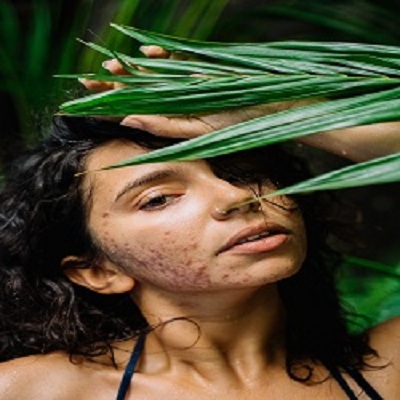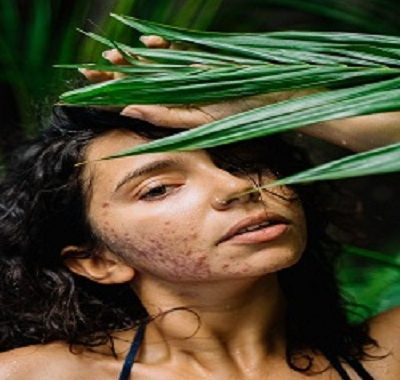
Acne, a common skin condition, manifests in various forms, each with its unique characteristics. In this article, we delve into the symptoms of acne, from whiteheads to painful nodules, exploring their development and potential consequences on an individual’s skin and overall well-being.
Whiteheads
The Closed Comedo Whiteheads, or closed comedones, result from the accumulation of excess oil and dead skin cells, blocking a pore’s opening. These blemishes appear raised and white or flesh-colored. Dermatologists caution against picking at whiteheads, recommending acne treatments for effective management.
Blackheads
The Open Comedo Developing similarly to whiteheads, blackheads, or open comedones, occur when excess oil and dead skin cells accumulate inside a pore. The distinctive black color is not dirt but a chemical reaction with oxygen. Dermatologists advise treating blackheads with retinoids to prevent infections or permanent scarring.
Pimples
Inflammation and Bacteria Pimples arise when excess oil, dead skin cells, and bacteria become trapped inside a pore. As the pore fills with bacteria, inflammation occurs, giving rise to pimples. Dermatologists suggest benzoyl peroxide, retinoids, or azelaic acid-containing products for effective treatment.
Acne Nodule or Cyst
Deep and Painful Breakouts Deeper into the skin, acne nodules or cysts form when a pore becomes inflamed due to an accumulation of excess oil, dead skin cells, and bacteria. Dermatologists can inject medication into extremely painful cysts to alleviate discomfort and expedite the healing process.
Acne Scars
A Lasting Reminder When acne clears, it may leave permanent scars, with depressions or raised areas on the skin. The risk of developing scars increases with prolonged untreated acne or a family history of acne scars.
Dark Spots
Post-inflammatory Hyper-pigmentation As acne resolves, flat spots may appear, varying in color from pink to brown. Unlike scars, these spots, known as post-inflammatory hyper-pigmentation (PIH), eventually clear on their own but may persist for an extended period. Treatment and proper skincare can expedite the clearing process.
Lowered Self-esteem
The Psychological Impact Acne’s visible effects can contribute to lowered self-esteem, particularly during the formative years. Research indicates a correlation between acne, low self-esteem, and negative impacts on various aspects of life, including career pursuits, social interactions, and mental health.
Depression
A Serious Consequence Teens with acne face an increased risk of developing depression, including suicidal thoughts. Dermatologists emphasize the importance of timely acne treatment to prevent the onset of depression and its potential consequences.
Consequences of Acne:
Beyond Breakouts While acne is commonly perceived as a transient condition, its impact can extend beyond breakouts, leading to lasting effects on an individual’s life.
Conclusion:
Understanding the symptoms of acne goes beyond recognizing the physical manifestations. It involves acknowledging the psychological and emotional toll that acne can take on an individual’s well-being. By adopting effective treatment strategies and seeking professional guidance, individuals can not only manage breakouts but also mitigate the potential long-term consequences of this common skin condition.
Further Reading:
FAQs:
Is acne a symptom of any disease?
Acne is generally not considered a symptom of a specific disease, but rather a common skin condition that results from a combination of factors. It is primarily associated with changes in hormone levels, especially during puberty, which can lead to increased oil production in the skin. The excess oil, along with dead skin cells and bacteria, can clog hair follicles, leading to the development of pimples, blackheads, and whiteheads.
How does face acne start?
Acne typically begins when hair follicles, or pores, become clogged with a combination of dead skin cells, excess oil (sebum), and bacteria. The process begins with the increased production of sebum, an oily substance that helps keep the skin lubricated. During puberty, hormonal changes, especially an increase in androgens like testosterone, can lead to the overstimulation of sebaceous (oil) glands, resulting in higher sebum production.
As the excess sebum mixes with dead skin cells, it forms a plug in the hair follicles. This plug, known as a comedo, can take two main forms: an open comedo (blackhead) or a closed comedo (whitehead). When the follicle wall breaks, it can lead to inflammation and the formation of various types of pimples, including papules, pustules, nodules, or cysts.
How can I identify my acne?
Identifying your acne involves recognizing the specific characteristics and types of lesions on your skin. Here are some common acne types and their features: Whiteheads (Closed Comedones), Blackheads (Open Comedones), Papules, Pustules, Nodules, and Cysts.
To identify your acne, closely observe the size, color, and texture of the lesions. Take note of any pain, tenderness, or inflammation. Consider the location of the acne on your face or body, as certain areas may be more prone to specific types of acne. Additionally, be mindful of any patterns or triggers that may worsen your acne, such as hormonal changes, certain skincare products, or dietary factors.
What does the start of acne feel like?
The onset of acne is often accompanied by subtle sensations on the skin. In the early stages, you may not necessarily feel the development of every acne lesion, but some common experiences can be associated with the initiation of acne: Tingling or Itching, Tenderness, Warmth, Awareness of Bumps.
It’s important to note that everyone’s experience with acne can vary, and not everyone may feel these sensations. Additionally, some people may not be aware of acne until visible signs, such as pimples or blackheads, become apparent on the skin’s surface.
